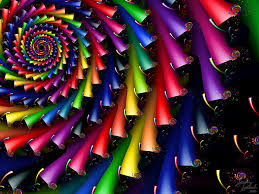In the month of May, we've had so many public holidays here in London that the whole month seemed to run into one. For me it they were like a Godsend because the well of my creativity had grown desperately dry. I really welcomed the chance to see our great city full of visitors.
When visitors come here on holiday they bring mess, noise and inconvenience but they also bring fresh perspectives, laughter, excitement and weird questions like 'Can you tell me where Sherlock Holmes lived,' even though Sherlock Holmes was a fictional character invented by Arthur Conan Doyle.
The wedding of Prince William to Katherine Middleton was a thrilling occasion - but for me, the important thing was that I got out there. If I had stood in the pouring rain to watch the bride go by in her gold and glass coach, it would have been just as good for my writing as if the weather were glorious.
I love the way that creativity has a voice in good times and in bad, whether we are busy empathising with other poor souls, perhaps homeless after a cyclone or a flood, or whether today, our own worries and troubles threaten to overwhelm us. It makes no odds - craft a word, redraft a line, snip a sentence here and there. Suddenly nothing else matters.
Jennifer Pittam is a winner of Coast to Coast writing competition and is working on her second novel.
When visitors come here on holiday they bring mess, noise and inconvenience but they also bring fresh perspectives, laughter, excitement and weird questions like 'Can you tell me where Sherlock Holmes lived,' even though Sherlock Holmes was a fictional character invented by Arthur Conan Doyle.
The wedding of Prince William to Katherine Middleton was a thrilling occasion - but for me, the important thing was that I got out there. If I had stood in the pouring rain to watch the bride go by in her gold and glass coach, it would have been just as good for my writing as if the weather were glorious.
I love the way that creativity has a voice in good times and in bad, whether we are busy empathising with other poor souls, perhaps homeless after a cyclone or a flood, or whether today, our own worries and troubles threaten to overwhelm us. It makes no odds - craft a word, redraft a line, snip a sentence here and there. Suddenly nothing else matters.
Jennifer Pittam is a winner of Coast to Coast writing competition and is working on her second novel.








.jpg)
.jpg)













